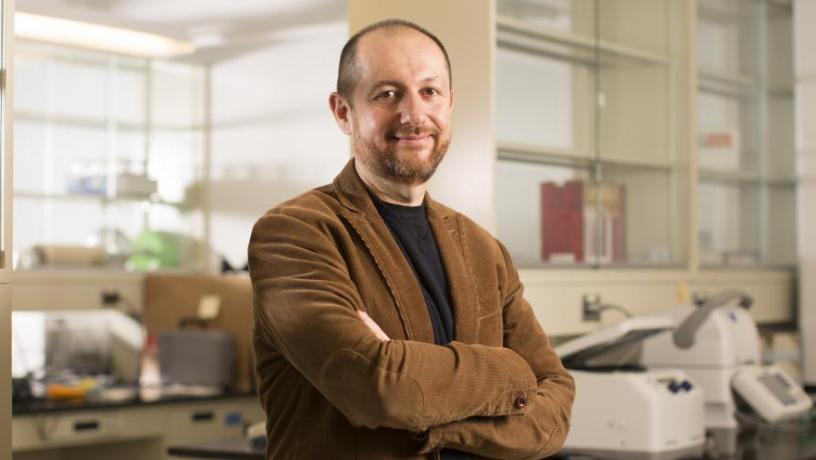The Department Welcomes Oleg Gang

Oleg Gang
Since childhood, science for me was much more than knowledge, I engaged emotionally, and it amazed me how seemingly different ideas and phenomena were interconnected. That inspired me to study physics and participate in research on light emitting semiconductors, hoping to appreciate the big picture and gain a unified view of the world. I completed my MS in Israel, specializing in spectroscopy of deep atomic levels and peculiar electron transitions. Although those studies were intellectually stimulating, they had an “observing” character and I quickly realized that I wanted a more active role in “shaping” the systems and the ways they can be probed. Thus, I was thrilled when I uncovered the richness of soft matter materials and that they offer an “active participation”.
I was particularly attracted to self-organization processes where small differences in energy balance and entropy of elements can lead to significant effects for the entire system. I decided to do my PhD in the area of experimental soft matter and self-assembly, with Prof. Moshe Deutsch at Bar-Ilan University. During my PhD years I studied an ordering in chain organic molecules at liquid interfaces, and we have discovered a new phenomenon, called “surface freezing”, i.e. molecules at the interfaces can crystallize while their bulk is still a melt, opposite to the common behavior. The recognition that by a tailoring molecular design it is possible to induce surprising and unexpected physical effect was extremely moving for me. And now, years later, I can see that this power of controlling the phenomena through the conscious design of a system is what attracts me to chemical engineering. On the other hand, revealing an interplay of contributing factors in those phenomena continue to spark my interests in physics.
To continue my studies in soft matter, I joined as a Rothschild postdoctoral fellow Peter Pershan’s group at Harvard University, where I began studying the behavior of nano-thick liquids on topologically nano-patterned surfaces. The surface interactions, nanoscale geometry and molecular details result in fascinating effects that were merely explored experimentally at that time. After completing my postdoc, I joined Brookhaven National Laboratory as a Goldhaber distinguished fellow and soon became a scientific staff member. My work at Brookhaven was focused on a range of problems related to polymers, soft matter, and nanoparticles. Besides studying the structural aspects of soft matter, my interests also involved bio-applications of nanomaterials (sensing and nano-objects interacting with living matter), optical effects in hybrid nano-systems, and new methods to study such structures.
One of my major research efforts in the recent years was focused on the question of how to create nanoscale systems with designed architectures and controllable dynamic properties through self-assembly. We have used DNA toolbox extensively to establish the “language” of nanoparticles “communications”, to promote the structures particle form, and to regulate system transformations. Besides gaining control over systems, those approaches are fruitful for uncovering macromolecular phenomena at the nanoscale. Due to the DNA plasticity and well defined binding characteristics, it is possible to think in practical terms about realization of complex design concepts; that is quite difficult to do for other classes of macromolecules. These developments lead to the intriguing opportunities for rational fabrication of nanoparticle-based materials, for establishing new manufacturing methods at nanoscale and new platforms for tailoring material functions. As an educator, I would like to engage undergraduate and graduate students in the stimulating process of creation, and to show them that intricate and powerful connections between ideas can be transferred to practical realizations in a lab.
I am very excited to join the scientific community at Columbia university, where both the Chemical Engineering and APAM (Applied Physics and Applied Mathematics) Departments will be my home. I am very grateful for the warm welcoming words I have received from my future colleagues and am looking forward to collaborating with my colleagues at Columbia on a broad range of aspects related to structures and applications of novel material systems.
